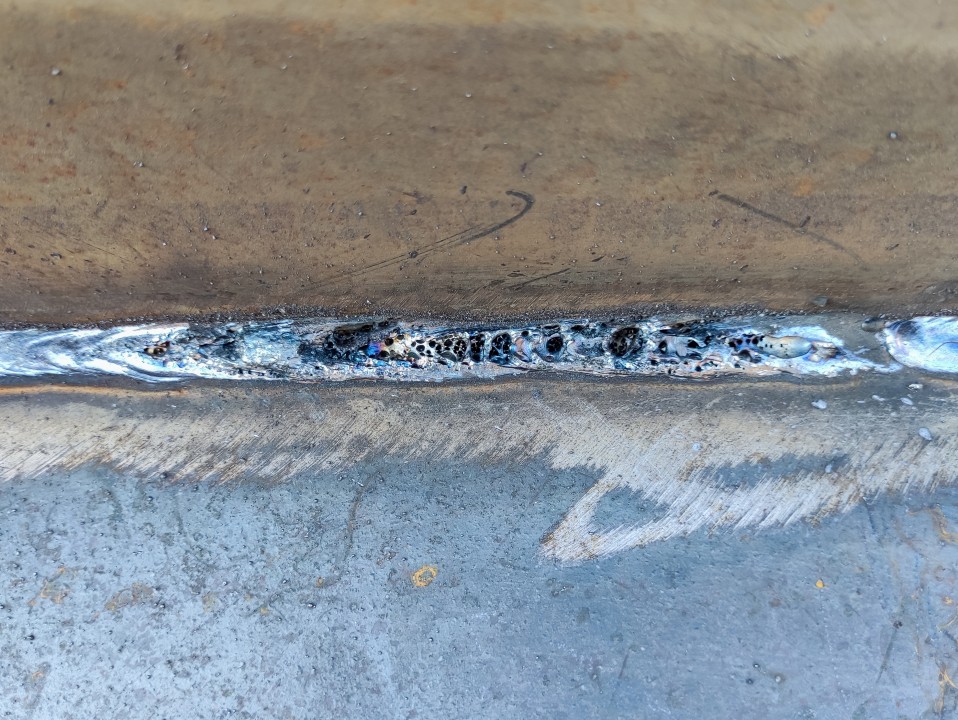The Scientific Research Behind Porosity: A Comprehensive Overview for Welders and Fabricators
Understanding the detailed devices behind porosity in welding is crucial for welders and fabricators aiming for remarkable workmanship. From the structure of the base materials to the intricacies of the welding process itself, a plethora of variables conspire to either intensify or relieve the presence of porosity.
Recognizing Porosity in Welding
FIRST SENTENCE:
Assessment of porosity in welding reveals vital understandings into the honesty and quality of the weld joint. Porosity, defined by the visibility of cavities or voids within the weld metal, is a typical worry in welding procedures. These voids, if not effectively dealt with, can jeopardize the architectural integrity and mechanical residential properties of the weld, leading to potential failings in the completed item.

To identify and quantify porosity, non-destructive screening approaches such as ultrasonic testing or X-ray assessment are frequently utilized. These methods permit the recognition of inner issues without compromising the integrity of the weld. By analyzing the dimension, form, and distribution of porosity within a weld, welders can make educated decisions to enhance their welding processes and accomplish sounder weld joints.

Elements Influencing Porosity Formation
The occurrence of porosity in welding is affected by a myriad of elements, varying from gas shielding efficiency to the intricacies of welding specification settings. Welding specifications, including voltage, present, take a trip rate, and electrode type, additionally impact porosity development. The welding technique used, such as gas metal arc welding (GMAW) or secured metal arc welding (SMAW), can affect porosity formation due to variants in heat distribution and gas coverage - What is Porosity.
Effects of Porosity on Weld High Quality
The visibility of porosity additionally deteriorates the weld's resistance to rust, as the trapped air or gases within the voids can respond with the surrounding setting, leading to degradation over time. Furthermore, porosity can impede the weld's ability to withstand stress or impact, more endangering the overall quality and integrity of the bonded structure. In essential applications such as aerospace, auto, or architectural buildings, where safety and durability are paramount, the damaging impacts of porosity on weld top quality can have serious effects, highlighting the relevance of lessening porosity through correct welding techniques and procedures.
Methods to Minimize Porosity
Furthermore, making use of the suitable welding criteria, such as the correct voltage, existing, and take a trip speed, is essential in avoiding porosity. Preserving a regular arc size and angle throughout welding also helps minimize the probability of porosity.

In addition, picking the ideal securing gas and keeping appropriate gas flow rates are crucial in minimizing porosity. Utilizing the ideal welding technique, such as back-stepping or using a weaving activity, can additionally aid distribute warm equally and lower the opportunities of porosity development. Last but not least, internet ensuring appropriate air flow in the welding atmosphere to remove any potential resources of contamination is crucial for accomplishing porosity-free welds. By applying these strategies, welders can successfully reduce porosity and produce high-quality welded joints.

Advanced Solutions for Porosity Control
Applying advanced innovations and cutting-edge methods plays a pivotal function in attaining superior control over porosity in welding processes. Additionally, utilizing Click Here innovative welding strategies such as pulsed MIG welding or changed environment welding can additionally help reduce porosity problems.
An additional innovative solution involves making use of innovative welding tools. Making use of tools with integrated attributes like waveform control and advanced power sources can enhance weld quality and decrease porosity risks. Additionally, the application of automated welding systems with exact control over criteria can dramatically decrease porosity issues.
Moreover, integrating sophisticated tracking and evaluation technologies such as real-time X-ray imaging or automated ultrasonic screening can assist in identifying porosity early in the welding procedure, permitting instant corrective actions. Overall, incorporating these sophisticated services can significantly improve porosity control and boost the general quality of welded components.
Verdict
To conclude, understanding the scientific research behind porosity in welding is crucial for welders and producers to produce high-quality welds. By recognizing the aspects influencing porosity formation and executing techniques to decrease it, welders can Clicking Here enhance the total weld high quality. Advanced services for porosity control can further improve the welding process and make certain a strong and reliable weld. It is very important for welders to continually inform themselves on porosity and execute ideal methods to achieve ideal outcomes.